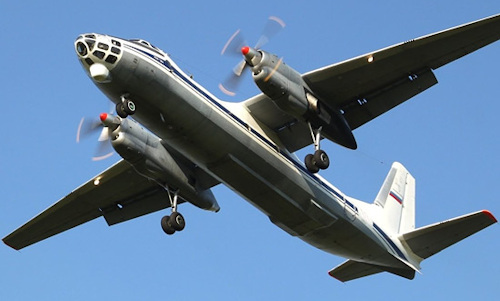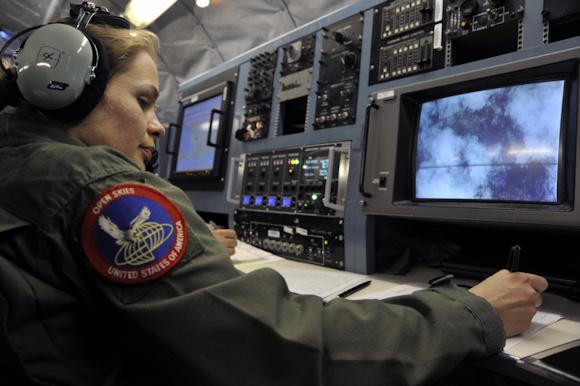On May 21, 2020, with one of his many impressive announcements that have made him famous everywhere, the president of the United States of America, Donald John Trump, announced that his country will withdraw from the so-called "Treaty on Open Skies ”(Open Skies) citing as the cause several violations of the same treaty by Russia, one of the other signatory states. However, for insiders, Trump's move comes as no real surprise because it echoes the words spoken in October 2019 by Secretary of State Michael Richard "Mike" Pompeo and Defense Secretary Mark Thomas Esper. The same House of Representatives of the Congress of the United States of America had already published several documents months ago that essentially paved the way for the subsequent presidential decision.
But what does the "Treaty on Open Skies" really consist of, and what are the stakes in the event of its forfeiture? To understand this, it is necessary first of all to take a step back in time.
In 1955, during the so-called "Geneva Summit" convened by the "Big Four" (United States, United Kingdom, France and the Soviet Union) to try to ease the tensions of the "Cold War", the then President of the United States of America, Dwight David "Ike" Eisenhower proposed to the "heavyweights" of the Soviet delegation (the first Communist Party secretary Nikita Sergeevič Chruščëv, Prime Minister Nikolaj Aleksandrovič Bulganin and Foreign Minister Vjačeslav Michajlovič Molotov) the creation of a mortgage regime military flights that would have allowed the great powers on the one hand to exchange military and security information and on the other to increase the degree of mutual trust. Needless to say, Eisenhower's proposal was at the time absolutely revolutionary and unthinkable so it was immediately rejected by a Soviet leadership still in full paranoia from national security. However in 1989, during the diplomatic meetings between President George Herbert Walker Bush and the first secretary of the Communist Party Mikhail Sergeevich Gorbachev, this initiative was proposed again and this time accepted, thus giving way to what would become the "Treaty on Open Skies" ”, Signed in Helsinki, the capital of Finland, on March 24, 1992 and entered into force on January 1, 2002 once Russia and Belarus had completed the ratification process.
 Originally conceived as an agreement concerning the member countries of NATO and the Warsaw Pact, the "Treaty on Open Skies" subsequently expanded to include countries not initially part of these two alliances or even neutral, ending up currently involving 34 countries located in North America, Europe and post-Soviet space. However, membership was by no means unanimous since, in the geographical areas mentioned above: Ireland, Switzerland, Austria, Serbia, Montenegro, Kosovo, North Macedonia, Albania, Cyprus, Moldova, Armenia, Azerbaijan, Kazakhstan, Uzbekistan, Turkmenistan and Tajikistan have decided not to join. Then there is the particular case of Kyrgyzstan which has signed this agreement but has not ratified it, thus remaining in a sort of limbo. Based on the agreements reached during the various diplomatic summits, the treaty signatories undertake to allow the parties to carry out a certain number of reconnaissance flights per year by means of a series of aircraft specially equipped for this task and which have essentially the task of collecting what would be called "intelligence information".
Originally conceived as an agreement concerning the member countries of NATO and the Warsaw Pact, the "Treaty on Open Skies" subsequently expanded to include countries not initially part of these two alliances or even neutral, ending up currently involving 34 countries located in North America, Europe and post-Soviet space. However, membership was by no means unanimous since, in the geographical areas mentioned above: Ireland, Switzerland, Austria, Serbia, Montenegro, Kosovo, North Macedonia, Albania, Cyprus, Moldova, Armenia, Azerbaijan, Kazakhstan, Uzbekistan, Turkmenistan and Tajikistan have decided not to join. Then there is the particular case of Kyrgyzstan which has signed this agreement but has not ratified it, thus remaining in a sort of limbo. Based on the agreements reached during the various diplomatic summits, the treaty signatories undertake to allow the parties to carry out a certain number of reconnaissance flights per year by means of a series of aircraft specially equipped for this task and which have essentially the task of collecting what would be called "intelligence information".
The aircraft used for this purpose they differ from country to country, however the sophisticated electronic equipment they are equipped with is scrupulously checked and screened by the other treaty partners in order to verify that there is no one ready to "play dirty". Some countries then decided to "pool" their flights in order to both reduce costs and create "variable geometry sub-synergies". This is the case, for example, of Canada, which uses for its missions a specimen of Lockheed C-130 Hercules specially modified with a dedicated electronic suite and equipped with a reconnaissance pod called "SAMSON". While the aircraft is in the hands of the Canadian Air Force, the pod has been developed by a consortium of countries which in addition to the "beaver country" includes: Belgium, the Netherlands, Luxembourg, Portugal, Spain, France, Italy and Greece. It goes without saying that in this way the aforementioned countries can share the costs of the missions and benefit from the results of the intelligence reconnaissance that is thus shared. Other countries instead, such as the United States and Russia, but also Sweden, have chosen to proceed alone.
The choice of the United States for their operating platform fell on the Boeing OC-135B Open Skies (photos) of which 3 were produced in the early 90s, and assigned to the "24th Reconnaissance Squadron" based at the Offutt air base, located south of Omaha, Nebraska, although 1 of them has since been withdrawn and placed in reserve.
 For its part, Russia has for years used some specimens of Antonov An-30 (photo) reinforced by a number of Tupolev Tu-154M-ON, but in recent years the Kremlin has taken the decision to replace the specimens of the above types mentioned with new Tupolev Tu-214ON aircraft, two of which, equipped with registration codes RA-64519 and RA-64525, are already in service and apparently are equipped with a new model of electronic suite among the most advanced in the world. And it seems that these aircraft were the official pretext for the breakup between Washington and Moscow, given that the authorities of the "stars and stripes" have accused Moscow of "playing dirty" and taking advantage of the existence of such free and not subject to restrictions (the contracting parties CANNOT use the "national security" card to prevent overflight) to obtain additional intelligence material; he accuses that, predictably, it was returned to the sender by the Moscow authorities.
For its part, Russia has for years used some specimens of Antonov An-30 (photo) reinforced by a number of Tupolev Tu-154M-ON, but in recent years the Kremlin has taken the decision to replace the specimens of the above types mentioned with new Tupolev Tu-214ON aircraft, two of which, equipped with registration codes RA-64519 and RA-64525, are already in service and apparently are equipped with a new model of electronic suite among the most advanced in the world. And it seems that these aircraft were the official pretext for the breakup between Washington and Moscow, given that the authorities of the "stars and stripes" have accused Moscow of "playing dirty" and taking advantage of the existence of such free and not subject to restrictions (the contracting parties CANNOT use the "national security" card to prevent overflight) to obtain additional intelligence material; he accuses that, predictably, it was returned to the sender by the Moscow authorities.
However, analyzing the situation as a whole, it is understood that, apart from individual aircraft and diplomatic disagreements of any kind, the truth on the ground is very different. In a world that, for some years, seems to have irremediably taken the path of a sort of "Second Cold War", the "Treaty on Open Skies" is simply falling by the wayside and falling victim to the new factual reality of renewed global tension. Adding then that in the last few years the main powers, among which the United States and Russia must undoubtedly be included, are challenging each other in a close struggle to reach the predominance in the field of the so-called "super-fast weapons" it is understood that, at Washington as in Moscow (and elsewhere) the political-military hierarchies are no longer anxious to find "spies" who freely run around the skies at home in search of their "dirty secrets".
As a final step, we must finally ask ourselves, what are the dangers associated with a possible end to the treaty? In reality, the answer could be "everyone and nobody" at the same time. Indeed, it is not the treatise in and of itself that constitutes the real problem. If anything, the treaty should function as a guarantee instrument to protect the political-military balance achieved, but if this balance remains shaken from the foundations by a new geopolitical reality that appears inescapable, then there is no treaty that holds and also the on the Open Skies ”will fall victim to the new era of global tension, with all due respect to all those who, between 1989 and 1991 spoke in a sudden way of" End of History ".
Photo: US DoD / MoD Russian Fed












